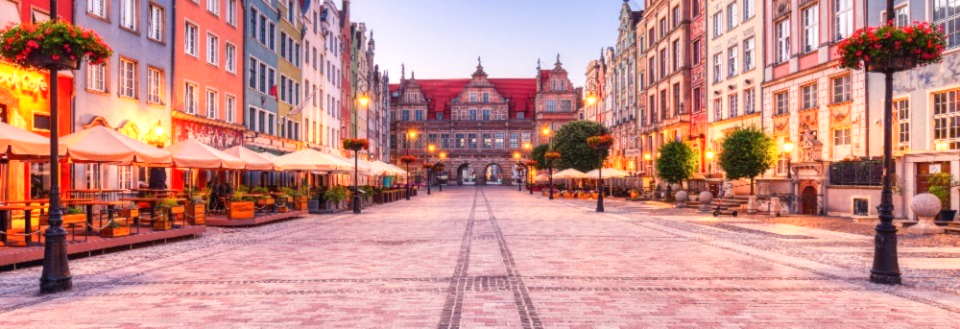Slovenia, independent from Yugoslavia since 1991, is the richest and most developed country in the Balkans. It has a very friendly population and offers plenty of scenic and cultural experiences matching even the biggest tourist targets in Europe. �
Slovenija
Ljubljana
20.256 km2
Slovenian
Catholicism
1.927.593 (2000)
Democratic republic
This compact and strategically important country is mainly dominated by mountains, rivers and large north-south and east-west passages. Slovenia borders on Italy in the west, Austria in the north, Hungary in the north-east and Croatia in the south-east. The country also has a 47 kilometres coastline facing the Adriatic.
Accommodation
�
September is an excellent month to go to Slovenia if you wish to do climbing or hiking. You will also avoid the large flocks of tourist and the high prices of the peak season. December to March is the ski season for those who wish to ski in the Alps. Spring is preferable if you wish to see the mainland in full bloom.
Lonely Planet Slovenia
Tolar (SlT), 1 tolar = 100 stoltin
There are only a limited amount of Internet cafés in Slovenia, the main ones being in Ljubljana.�
To call for an emergency in Slovenia, you must dial the following numbers:
Police (113)
Ambulance and fire brigade (112)
Car help (987)
You normally give 10 percent when tipping at hotels, restaurants and in taxis. �
When it is 12.00 in Britain, it is 13.00 in Slovenia.
They use the following measures:
Length: metre
Weight: kilo
Liquid: litre
You can take pictures of anything you like in Slovenia. There may be special rules in religious buildings though.
Tap water is safe, but it tastes a bit of chlorine. You can also buy bottled water.
They use the following current:
220 volt AC, 50hz
It is not allowed to smoke on public transport, cinemas, theatres, public offices and in waiting rooms. As in the rest of Europe, you greet people with a handshake. Slovenians appreciate basic politeness.
�
Shops are open from 8.00 to 19.00 (Monday - Friday) and from 8.00 to 13.00 (Saturday).
Banks are open from 9.00 to 16.30 (Monday - Friday) and from 9.00 to 12.00 (Saturday).
Post offices are open from 8.00 to 18.00 (Monday - Friday) and from 8.00 to 12.00/13.00 (Saturday).
Offices are open from 8.00 to 16.00 (Monday - Friday).
The neighbouring Germanic countries have influenced Slovenian cuisine. Sauerkraut, grilled sausages and apple cake are often found on the menu, but the best known Slovenian food is bread - for example braided pretzels, made for special occasions. The western and north-eastern parts of the country are also known for their excellent white wines.�
Slovenia is not a country which is used to disabled travellers. But in Ljubljana they have put in sound signals at pedestrian crossings and they buses with access for wheelchairs. Unfortunately most of the sights and attractions have not given thought to disabled travellers. �
New Year, 1 and 2 January
Slovenian culture Day, 8 February
Resistance Day, 27 April
Labour Day, 1 and 2 May
National Day, 25 June
Virgin Mary's Ascension, 15 August
Reformation Day, 31 October
All Saints, 1 November
Christmas, 25 December
Independence Day, 26 December
You are not allowed to camp outside the public camping grounds in Slovenia. There are plenty of them and they are all about to be categorised according to European standards.
There are about 200 hotels in Slovenia. They are spread all over the country and vary a lot. The old state owned hotels do not always live up to demands of good quality and service.
Private rooms and apartments are a possibility all over Slovenia. It is a good idea to ask the local tourist office for advice, though.
There are only a modest number of hostels in Slovenia, and they are often full of Slovenian students.
Farmhouse holidays have become a quite popular form of accommodation for tourists in Slovenia. The Slovenian association of farmhouse tourism was founded in 1997 and today the association has 230 members. Their main office can be contacted on the following address:
Trnoveljska cesta 1
3000 Celje
Phone: (0)3 491 64 80
E-mail: mailto:ztks@siol.net
There are three international airports in Slovenia: in Ljubljana, Maribor and Portoroz. The national airline company, Adria Airways, has several domestic flights.
The Slovenian bus system consists of a confusing quantity of small local bus companies, which actually succeed in running a well co-ordinated service. In large cities like Ljubljana, Maribor and Koper there are large bus stations where you can book journeys in advance on electronic ticket machines. �
The Slovenian railways are well functioning and efficient. There are two kinds of trains. The slow potniski, which stop at all stations, and the IC-Train, which are faster and also a bit more expensive.
There are taxis in all major cities in Slovenia. �
There are car rental firms in all major cities and airports in Slovenia. Both international and local firms are represented.
It is very normal to hitch hike in Slovenia, but keep to the large arterial roads between the large cities, where you are most likely to get a lift.
